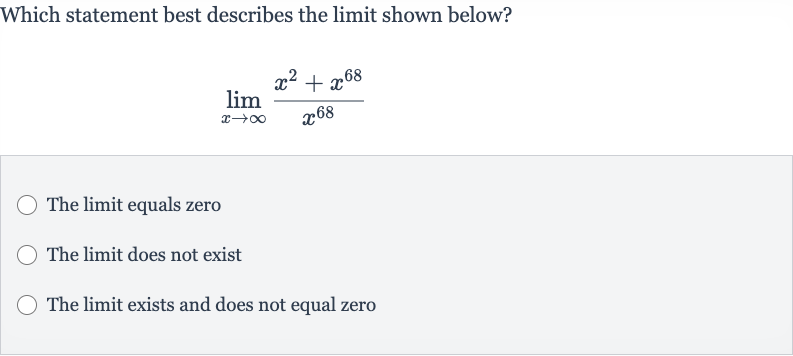Full solution
Q. Which statement best describes the limit shown below?The limit equals zeroThe limit does not existThe limit exists and does not equal zero
- Divide Terms by : We are given the limit expression . To find the limit as approaches infinity, we can divide each term in the numerator by .
- Evaluate : Divide by to get . As approaches infinity, approaches .
- Evaluate : Divide by to get . As approaches infinity, this term remains .
- Combine Results: Combine the results of the division to rewrite the limit expression as .
- Simplify Expression: Simplify the expression to get the limit as approaches infinity of , which is simply .
More problems from Power rule
QuestionGet tutor help
QuestionGet tutor help
QuestionGet tutor help
QuestionGet tutor help
QuestionGet tutor help

